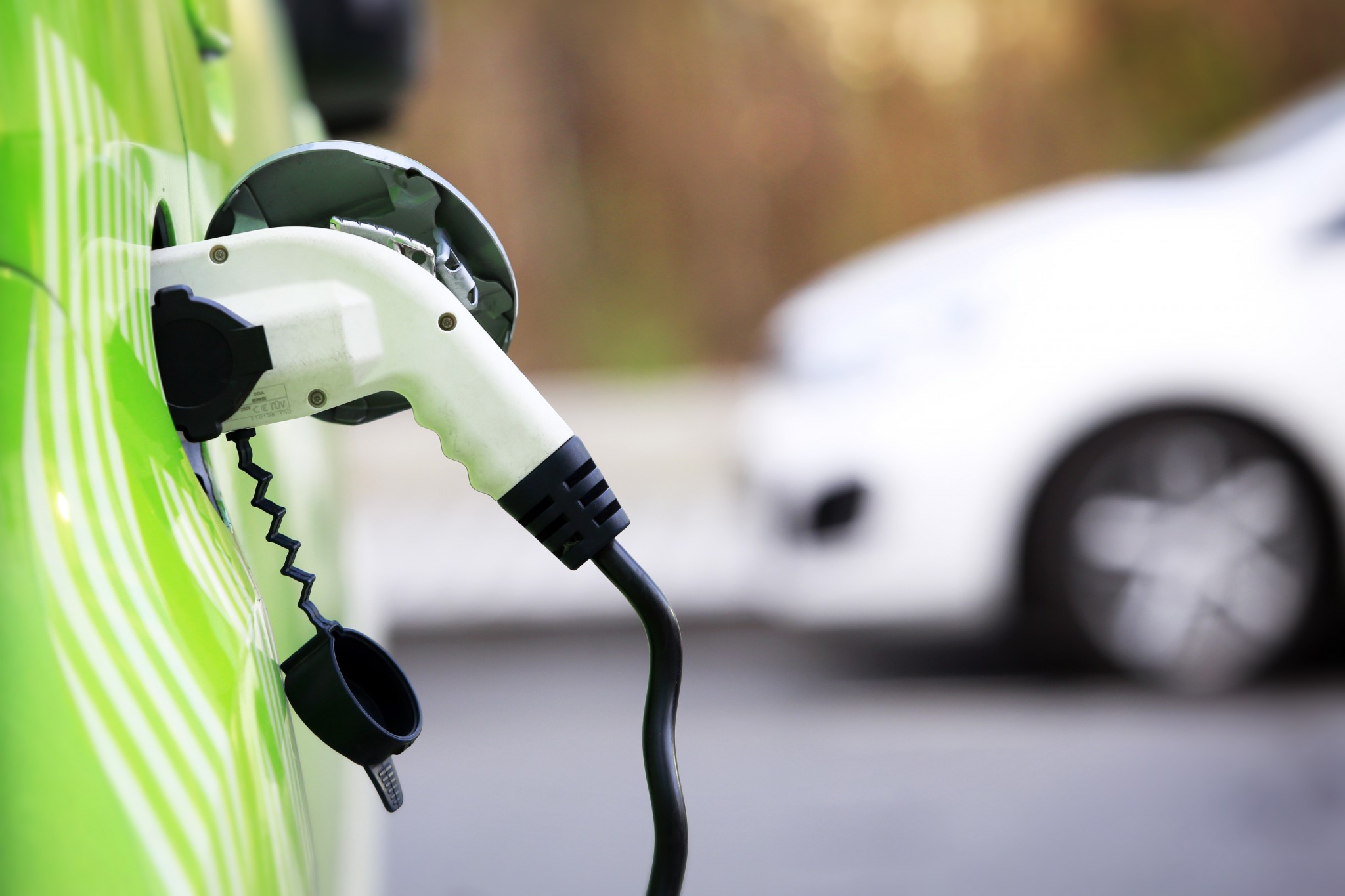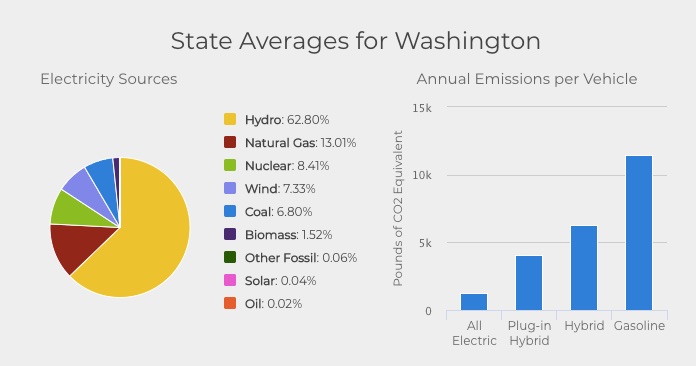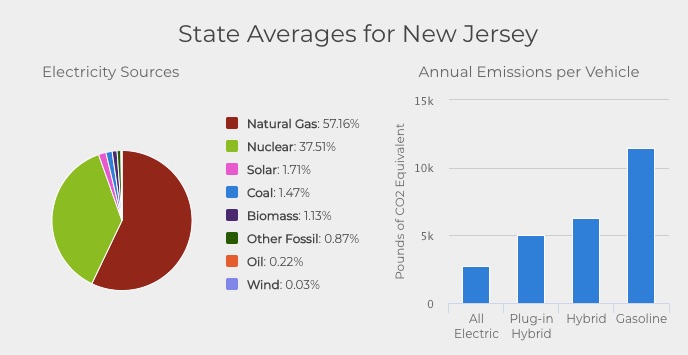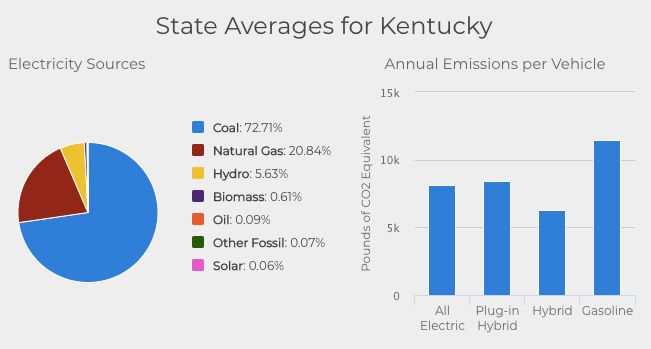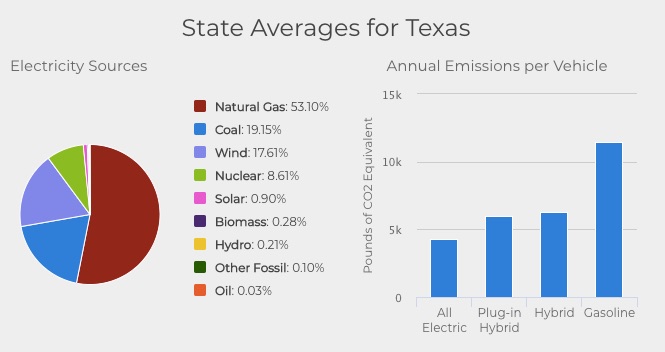What if every car on the road is electric? Wyoming would need 17 percent more electricity. while for Maine, it’s a whopping extra 55 percent.
Because each state has a different grid mix, your zip code matters when you buy an EV.
The Grid Mix
Each state has a different grid mix that determines the emission expense of an EV. One state’s primary electricity source could be natural gas or hydro-power. Another’s could be coal or nuclear plants.
This is the summary:
 But let’s take a closer look. (Unless otherwise indicated, all graphs are from the U.S. Department of Energy/Alternative Fuels Data Center):
But let’s take a closer look. (Unless otherwise indicated, all graphs are from the U.S. Department of Energy/Alternative Fuels Data Center):
Washington state gets 63 percent of its power from hydro-related sources::
Quite different, New Jersey depends on natural gas and then nuclear power. Combined, they provide almost 95 percent of New Jersey’s electricity:
Meanwhile Kentucky gets almost three quarters of its electricity from coal powered plants. Combine that with natural gas and hydro sources and you are almost at 100 percent:
Again different, California depends on natural gas but hydro and solar are up there too:
And finally, Texas power comes from natural gas but here we have to add coal and wind too:
Our Bottom Line: Emissions
Whether zooming in on the country, a state, or your garage, the closer we look, the more we see about how much an electric vehicle helps the environment.
A mathematician once told us that the length of the British coast is infinite. Yes, when you see it from a distance, it appears to be an unbroken measurable line. However, the closer you look, the more you see. There are small inlets that have tinier indents. They go on forever, getting smaller and smaller.
Do enjoy this brief zoom that starts large and winds up with a dendrite area:
Our emissions data reveal the same phenomenon.
To determine the actual emissions benefit of an EV, we need to look upstream at the well-to-wheels factor and compare it to direct (tailpipe) emissions of internal combustion machines. Well-to-wheels refers to the electric grid mix. It takes us to fuel production, processing, and distribution.
Next, we should even be thinking about when you charge your car. Midnight, when demand tapers, is much better than the early evening because your power plant has peak capacity that we should try to utilize. In addition, we can check if your state has installed charging stations. Policy planners could even consider the way EVs store electricity when fully charged.
So, where are we? To find the emissions created by your EV, we need to know your zip code.
My sources and more: My subscription to the Fact of the Week from the DOE came in handy yesterday. It took me to each state’s grid mix that, like me, you could find it tough to stop looking at. From there, The Washington Post discussed at grid optimization. Then, to take an interesting leap, I recommend this Yale Daily News Benoit Mandelbrot obituary on fractal math. (Please note that my Mandelbrot discussion was in a previous econlife post.)

